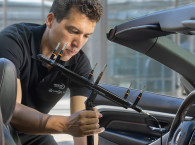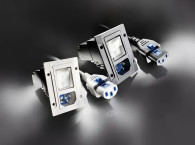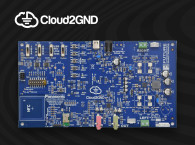 The latest portable electronic devices are expected to go everywhere with us and withstand anything, as soon as they leave the assembly line… but what about while they are still on the assembly line? In examining this challenging environment, W. L. Gore & Associates (Gore) developed GORE MEMS Protective Vents, designed to shield the device from extreme conditions faced during manufacturing and maximize yields.
The latest portable electronic devices are expected to go everywhere with us and withstand anything, as soon as they leave the assembly line… but what about while they are still on the assembly line? In examining this challenging environment, W. L. Gore & Associates (Gore) developed GORE MEMS Protective Vents, designed to shield the device from extreme conditions faced during manufacturing and maximize yields.During high-volume assembly of printed circuit boards for mobile phones, cameras and other devices, there are several technical issues that can jeopardize the integrity of MEMS microphones. These issues – including pressure build-up caused by the extreme heat during the solder reflow process, particle contaminants and aerosolized solder droplets – have the potential to damage MEMS microphones, leading to acoustic performance degradation, significant yield losses and higher manufacturing costs.
“Many manufacturers currently use non-porous tape to cover the microphone port during this process in order to prevent contaminants from entering,” says Mike Jacobs, Global Product Manager for GORE MEMS Protective Vents. “While this method is quite effective in preventing contamination, it unfortunately leaves the microphone prone to potentially damaging pressure build-up and prevents in-process acoustic testing.”
Gore’s Design and Engineering team have developed GORE MEMS Protective Vents, a stringently tested and proven solution to prevent particle contamination and pressure build-up, allow in-process acoustic testing, and integrate seamlessly into automated dispensing and placement processes.
Working directly with OEMs, Microphone Manufacturers and Contract Manufacturers, Gore has manufactured over 100 million GORE MEMS Protective Vents designed to handle the extreme stresses of high volume, high speed installation, as well as multiple reflow cycles of up to 280 ºC (390°F) for 40 seconds.
“The conditions a MEMS microphone is put through during high-volume assembly can often be more extreme than those in the outside world,” says Jacobs, “and even the smallest particle or pressure differential can cause irreparable damage to the MEMS microphone or significantly degrade acoustic performance.”
GORE MEMS Protective Vents are unique in their ability to provide reliable particle protection, while its breathable ePTFE membrane allows gases to pass through the microphone port to mitigate pressure build-ups that may cause damage to the microphone. These are available in formats designed to meet specific needs of both circuit board assembly and microphone manufacturers.
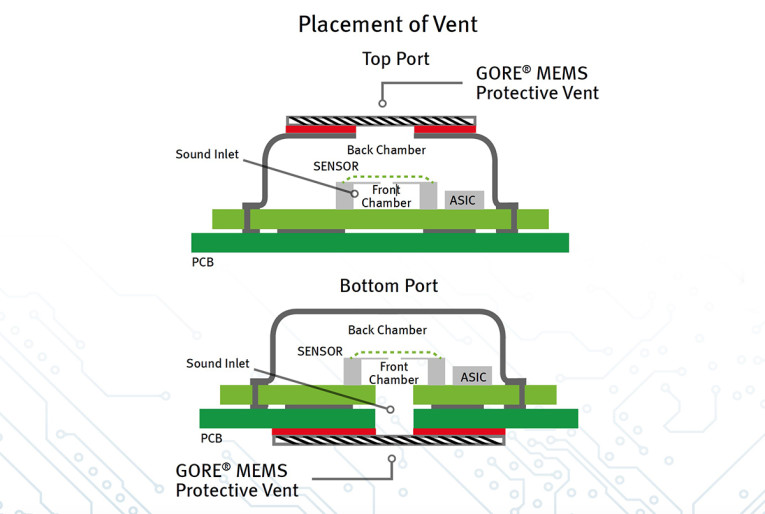
For Circuit Board assembly, the company delivers Style 100 protective vents (above), allowing for installation, either over the top of a top-port microphone or on the circuit board opposite a bottom-port microphone, right before the reflow process. It is available in reel packaging to enable seamless installation with high-speed SMT pick and place machines.
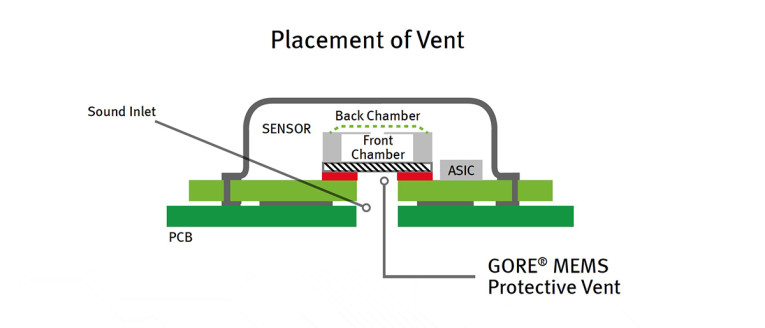
For microphone manufacturers, Style 200 protective vents can be installed inside the MEMS microphone during the packaging process, providing particle protection without any special handling during the circuit board assembly process. Parts are digitally mapped in a wafer format and are compatible with high speed die attach equipment.
W. L. Gore & Associates is a global materials science company dedicated to transforming industries and improving lives. Founded in 1958, Gore has built a reputation for solving complex technical challenges in the most demanding environments— from revolutionizing the outerwear industry with GORE-TEX fabric to creating medical devices that improve and save lives to enabling new levels of performance in the aerospace, pharmaceutical, automotive and mobile electronics markets, among other industries.
www.gore.com/mems




